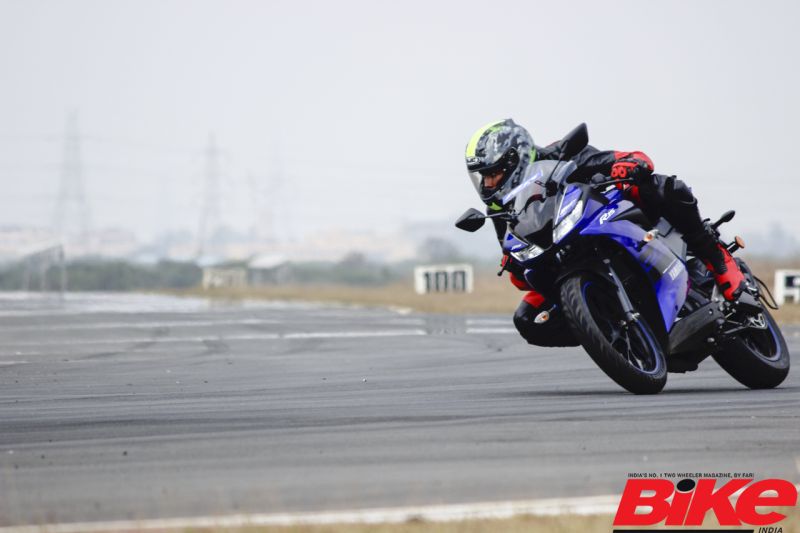
The latest generation of the Yamaha YZF-R15 marks evolution in the right direction
Story: Joshua Varghese
Photography: Saurabh Botre
The Madras Motor Race Track (MMRT) was the venue for the first ride of the YZF-R15 when it was launched in India. Incidentally, 10 years later we were at the same track for the first ride of Version 3.0.
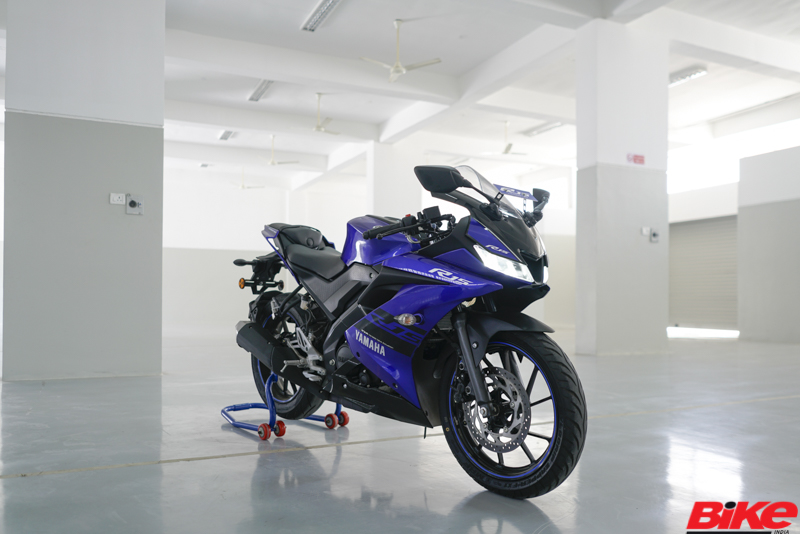
Since its introduction, the R15 has been popular among people looking for an accessible option to experience Yamaha’s R series. The motorcycle soon set a benchmark in handling and became the choice of wheels for budding racers. Now the Japanese marque has brought the third iteration of the YZF-R15 to India.
A row of spanking new R15s were lined up in the MMRT pit-lane. The motorcycle’s sharp lines and aggressive stance echoed its superbike lineage even at standstill. As I came closer, it became evident that Yamaha had taken a lot of visual elements from the legendary YZF-R1. The sharp lines of the motorcycle extended from the twin LED headlamp to the sculpted fairing and on to the chiselled dual-tone fuel tank. The rear cowl flanking the subframe looks attractive and blends seamlessly with the LED tail-lamp. Overall, the motorcycle represents an evolution of the purposeful look that the R series is known for and continues to arrest inquisitive eyes until they have appreciated every detail.
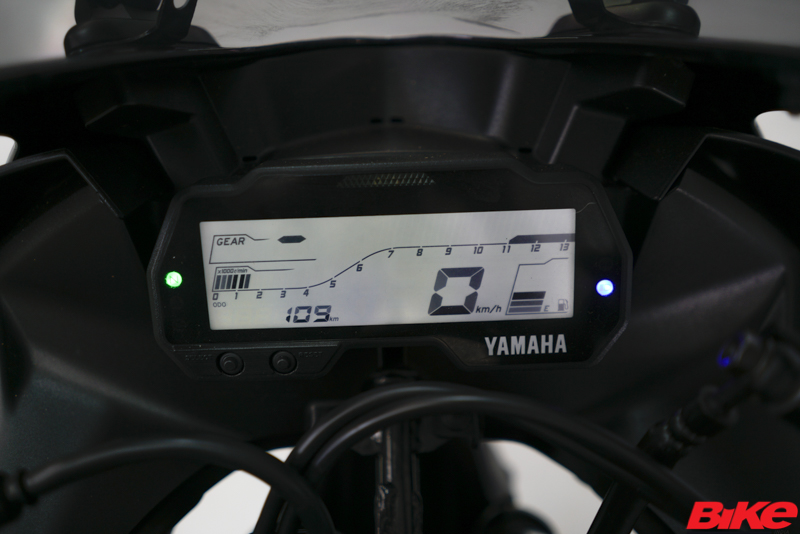
Turn the key and the fully digital instrument cluster lights up with a “hi buddy” message. The screen is dominated by the tachometer and speedometer with a gear indicator, fuel gauge, and clock arranged around them. Instead of the clock, you can toggle between the odometer and trip meters (with average speed and fuel consumption displays).
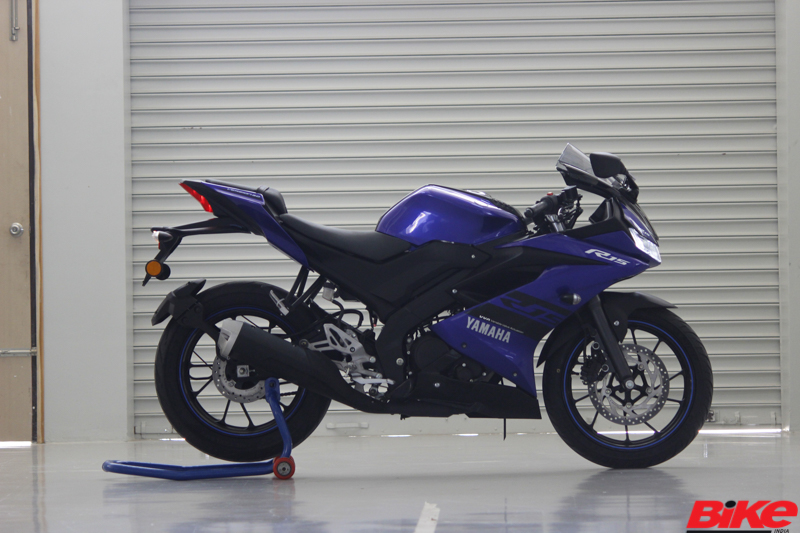
Powering the motorcycle is a new 155-cc liquid-cooled single-cylinder engine that produces power and peak torque at higher rpm as compared to the previous model. While the torque remains the same, the power has gone up by 2.3 PS. The Variable Valve Actuation (VVA) system has improved performance throughout the rev-range. It makes use of two cams to control the lift of the intake valves. At 7,400 rpm, the larger cam is engaged which actuates the intake valves, giving a slightly higher lift. This helps the motorcycle deliver better top-end performance without compromising on bottom- and mid-range performance. The engine is mated to the same six-speed gearbox as on its predecessor, this time via a slipper clutch, though.
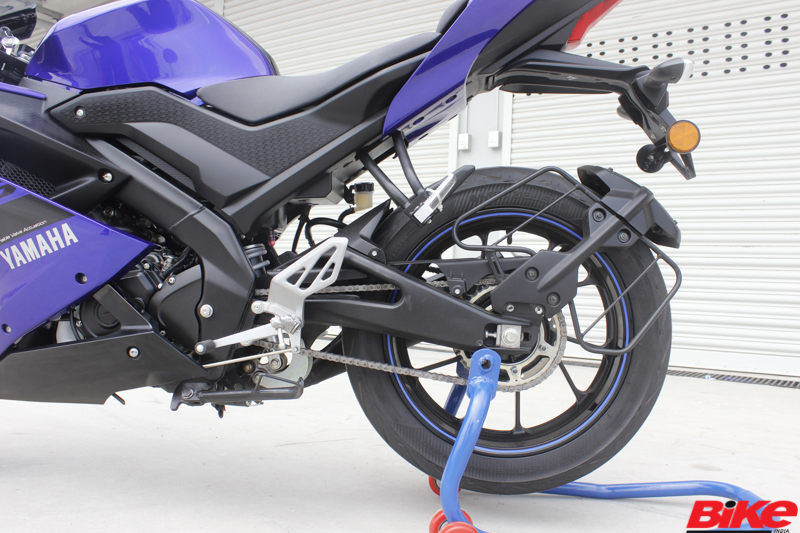
The new Deltabox frame has received changes to the swingarm pivot and subframe. The shorter swingarm and minor changes to the rake angle have brought down the wheelbase to 1,325 millimetres (20 mm shorter than in Version 2.0). At the front is a 41-mm telescopic fork and the rear is managed by a linkage-type monoshock.
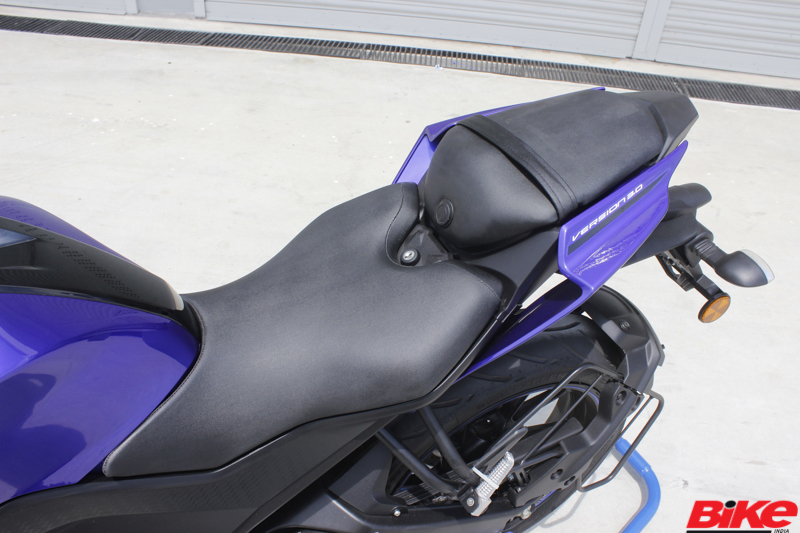
As I settled into the saddle, the first thing I noticed was the improved riding position. The saddle is longer, roomier, and more comfortable, with plenty of space for tall riders also. The foot-pegs are slightly rear-set than in the previous model and, in full race crouch or otherwise, the committed seating position feels natural and is far from demanding. After spending nearly an hour on the track I did not experience any physical discomfort whatsoever.


Leave a Reply